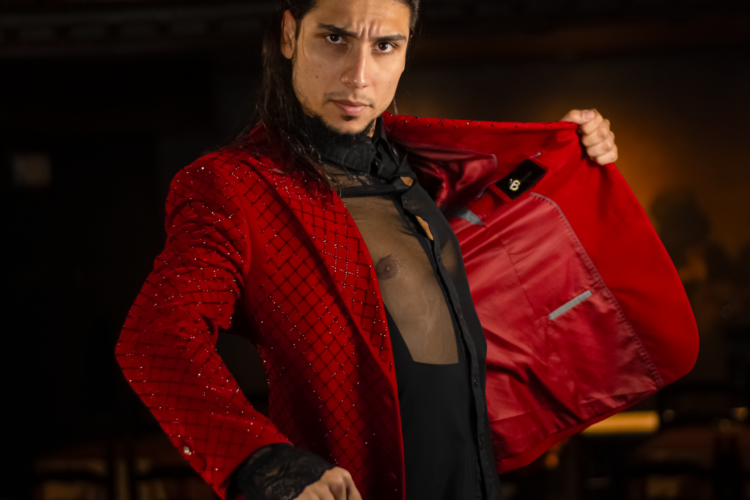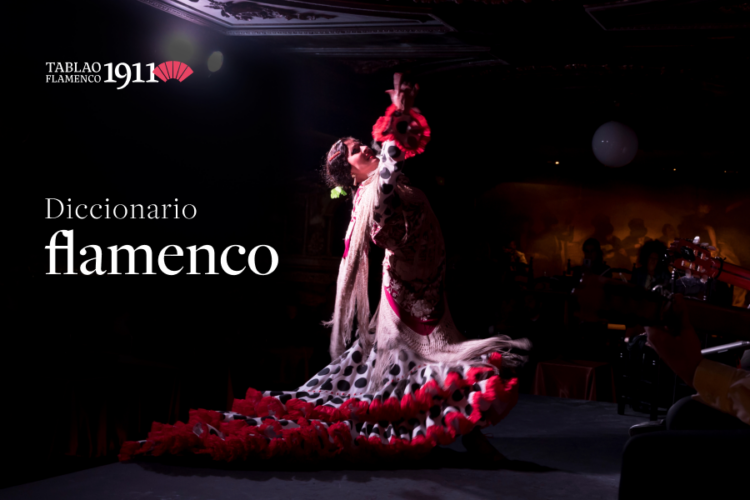
El Yiyo: The New Legend of Flamenco
The stage welcomes a flamenco phenomenon: El Yiyo.

Before anything else, there’s one thing you need to know: flamenco can’t be learned from books — you have to live it.
I’m not even going to ask if you’re coming to Tablao Flamenco 1911, because we know you will (or at least, you should).
That’s why we’re giving you this little dictionary — because we know it helps to understand what’s going on when that shiver runs down your spine.
So here are some key words, just so you don’t get lost and can enjoy it even more when you come see us.
This isn’t an encyclopedia. This is just you and me — so we can understand each other.
Cante: Well, it means singing. But in flamenco it’s… something else. It’s the voice slicing through the air. It can be jondo (the stuff that hurts, the deep, serious part) or chico (the party vibe, the fun, lighter love stuff). And then there’s stuff in between. Each palo (I’ll tell you what that is later) has its own thing.
Cantaor/a: The guy (or gal) who has the guts (or the heart!) to get up there and bare their soul with their voice. Each one has their own “metal,” their unique sound. Some caress you, others scratch you up inside.
Cante Jondo: Oof. This is the heavy stuff. The kind that talks about deep sorrows, death, unfiltered life. It’s the oldest kind of flamenco, the stuff that has weight.
Cante Chico: The flip side. Alegrías, bulerías, tangos… for dancing, for laughing, for shaking off the blues for a bit. More rhythm, more life.
Afillá (Voz): You know that voice that isn’t ‘pretty,’ but gets right into your bones? Raspy, like it’s got sand in it. That’s it! Pure grit.
Jipío / Quejío: That torn ‘Ay!’ that escapes. The pure lament, beyond words. If you don’t feel a pinch right there… something’s wrong.
Temple: That little moment just before they start. The cantaor closes their eyes, finds the key, tests their voice… A silence falls that’s thick with anticipation. Pure tension.
Letra: The little verses they sing. Sometimes they’re centuries old, sometimes they make ’em up on the spot. Short, but they say a lot.
Remate: The big finish. When they really give it some gas to close the letra or the cante. Boom! That’s the end of that bit.
Baile: When the body starts speaking flamenco. It can be elegant, wild, sad, happy… whatever fits.
Bailaor/a: The one dancing it, obviously!
Zapateado: The racket they make with their feet! Pure rhythm beaten out with heels and taps. Can be soft or like a machine gun.
Braceo: The dance of the arms and hands. Looks easy, but the artistry some have! They accompany, they draw shapes in the air…
Desplante: A sudden stop, planting themselves with attitude (artistic attitude, you know?). Like saying “Here I am.” Used to mark the end of a section or a change.
Llamada: A tap, a gesture, a strong stomp… to signal the musicians: “Watch out, I’m changing!” or “Your turn now!”
Salida: How the baile begins. The way they enter the stage tells you a lot about the palo and the bailaor/a.
Marcaje: Carrying the rhythm with softer steps, kind of “walking” the beat before getting into the heavy stuff.
Vueltas: Turns! Fast, slow, all kinds. They add spectacle.
Figura: The final pose of a movement. Like a snapshot full of intention.
Toque: Playing the flamenco guitar. But it’s not just accompanying, it’s way more!
Guitarrista (or Tocaor): The one on the ‘sonanta’ (the guitar). They cushion the cante, give the beat to the baile, sometimes they rip out solos that blow your mind (que flipas).
Falseta: That melodic bit the guitar plays alone, between verses of cante, or while the bailaor catches their breath. Time to show off.
Rasgueado: When they sweep across the strings with their fingers. That classic flamenco guitar sound, really going at it!
Trémolo: A technique that sounds like one note is trembling and never ends. Very beautiful.
Picado: Playing notes very fast and clean, one after the other. Pure speed.
Arpegio: Playing the notes of a chord one by one, like plucking them out individually.
Cajón: That wooden box they sit on to play it. It showed up a few decades ago and now it’s almost standard. Gives a great rhythmic pulse.
Compás: The heart of the matter! The basic rhythm pattern of each palo. Can be in 2, 3, 4 beats… or the crazy 12-beat cycle (soleá, alegrías…). It’s the law. If you fall off the compás, everyone knows!
Contratiempo: Accenting the off-beats, playing against the main pulse. Gives it that tasty little syncopated kick.
Silencio: Hey! Just as important as the sound. Flamenco needs to breathe. Those pauses are loaded.
Palmas: Essential! They accompany, mark the rhythm, create warmth. Without palmas, flamenco is incomplete.
Palmas sordas: Softer claps, cupping the hands. Done so as not to overpower the cante during delicate moments.
Palmas abiertas (or claras): Sharp, loud sound. To liven up the party!
Jaleo: The shouts you hear: “¡Olé!“, “¡Vamos allá!” (Let’s go!), “¡Así se baila!” (That’s how you dance!), “¡Agua!” (Water!). It’s the audience (or the artists themselves) cheering, getting into it.
Duende: Ah… this one’s hard to explain. It’s when something magical, inexplicable happens. A shiver, goosebumps… Art in its purest form. You don’t look for it, it just appears! (Or it doesn’t).
Aire: The personal style, the unique “flavor” each artist has when they move, sing, or play. Their personality made into flamenco.
Compás interior: Carrying the rhythm inside. Some people are just born with it, they couldn’t lose the beat if they tried.
Tablao: The legendary spot. Small, intimate. You see the artists up close, feel the floor vibrate… The most authentic experience, for me.
Cuadro flamenco: The little group performing: cante, baile, toque (guitar), and often palmas and cajón. The ‘band’.
Improvisación: A lot of what happens is spur-of-the-moment. They look at each other, they understand… and boom! That’s why every night is different.
Ensayo: Just because there’s improv doesn’t mean they don’t rehearse, okay? The basics, the signals… that’s worked out.
Actuación en vivo: You gotta experience it live! Forget videos. Seeing it in person is a whole different story.
Silencio flamenco: That moment right before something big (a remate, a powerful quejío…). Everyone goes quiet, the tension hangs in the air. Intense!
Palo: The “types” or styles of flamenco. Each has its own music, rhythm, vibe: Alegrías (more festive), Soleá (more serious), Seguiriyas (pure pain), Bulerías (the big chaotic one, often to end the party)… There are tons.
Estilo: Within each palo, there are variations. Like “versions” from a specific place (Cádiz, Jerez, Triana…) or linked to a famous singer.
Letra tradicional: Those verses they sing that seem to belong to everyone and no one. Pure folk wisdom.
Ay: It’s not just a sigh! It’s a lament that gets sung, stretched, broken… A word that is pure flamenco.
Macho: A short, punchy little verse they sometimes stick at the end of certain cantes.
Eco: When the cantaor plays around repeating the end of a phrase or a sound.
Alright, now you’ve got a few clues to dive into this world. But like I said: you don’t really get it until you feel that pinch live. So, if you can…